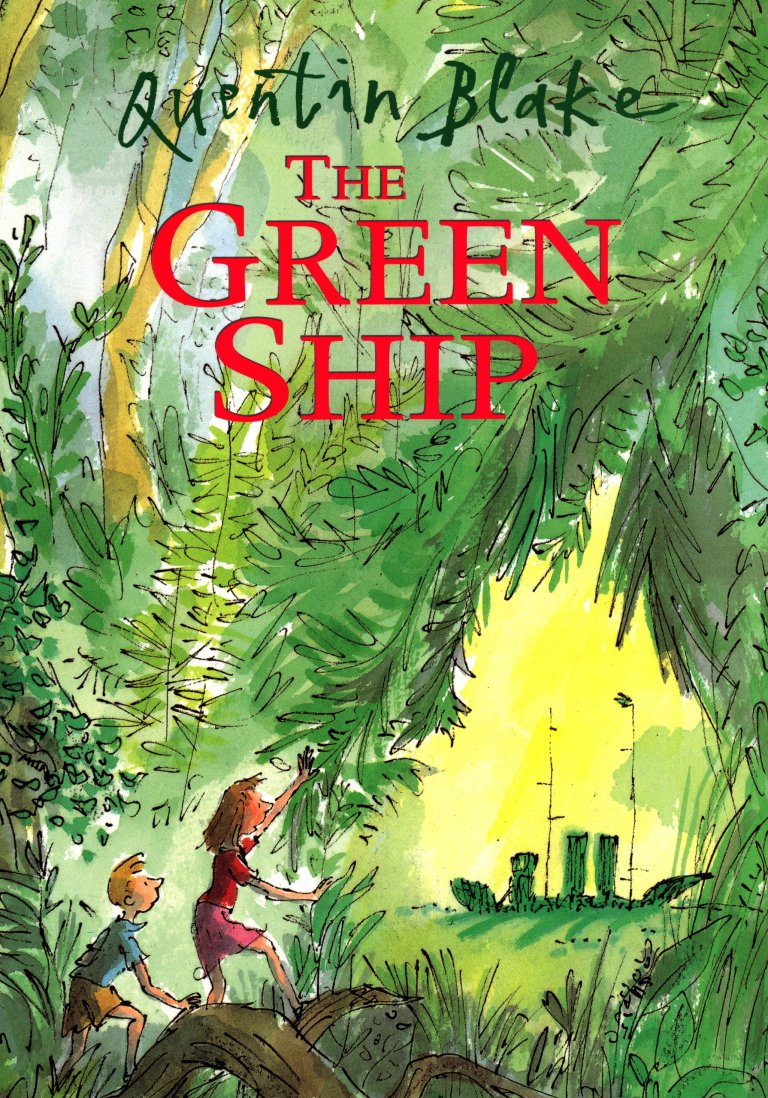
‘I can remember very clearly, even now, what it was like when we climbed over the wall into the garden of the big house. We knew we weren’t supposed to… but we were on the lookout for adventure.’

A boy and a girl escape the boredom of their aunt’s house and plunge deep into a jungle of trees covered in ivy and through a screen of branches to discover a ship quite unlike any other.

The Green Ship ‘wasn’t a real ship; but you could see it was meant to be a ship. Bushes had been cut into the shape of the bows and stern, and two trees trimmed to look like funnels. On either side of theses there were two tall thin trees with not many branches that were obviously meant to be the masts.’

On closer investigation they discover a clue, ‘a photo in a brown wooden frame of a man in uniform.’ We never meet this man, but he his presumably the captain, and the late husband of the lady who owns the Green Ship, Mrs Tredegar.

With Mrs Tredegar the children explore the ship, their imaginations taking the immobile but ever changing vessel on a series of adventures from Italian ruins, past the far-off shores of Egypt and into the Arctic.

Quentin Blake’s original inspiration came to him in a vision: ‘I not so much dreamt as woke up with the image of the Green Ship in my head… When in due course I decided that I must set to a try to work out a narrative it was help from an impeccable maritime source – Joseph Conrad and in particular The Shadow Line – that got me through and into the possibilities of the situation.

The Shadow Line (1915) is about a young skipper on his first captaincy in the Orient. It is told in retrospect by an older, world weary man looks back on his younger self. Blake uses the same trick here, with the protagonists remembering their adventures with a certain wistfulness that will be keenly felt by adult readers.

Another layer of poignancy comes from Mrs Tredegar, who we assume has lost her husband. The Green Ship is perhaps her memorial to him, and so in finding it and flooding imaginative life through the timbers, the children revive memories of her lost captain.

‘The Story is about time and memory,’ Blake writes, ‘and for me this gave the final few pages of the book special interest. When I wanted to show the ship growing out back into trees, I could not help being reminded of the pleasure that I had as a child of comparing two similar pictures to note the changes and variations between them. I hope that pleasure will invite the reader to turn back the pages and so perform, in three dimensional book terms a little act of memory.’

The effect is extraordinarily moving and a stunning artistic achievement. This is without doubt some of Quentin Blake’s most powerful work. There is he explains, ‘a tension between words and image, so that while the text is sadly telling us about the disappearance of the ship the illustration shows us that the trees themselves are busting out with greenness and renewal.’
The Green Ship is published by Random House. Quotations are taken from Quentin Blake: Words and Pictures.


